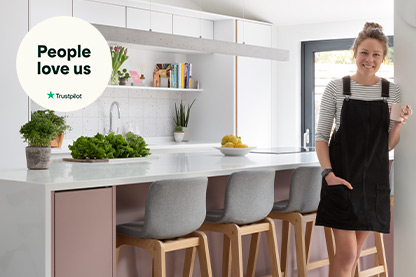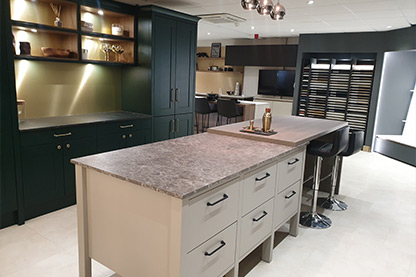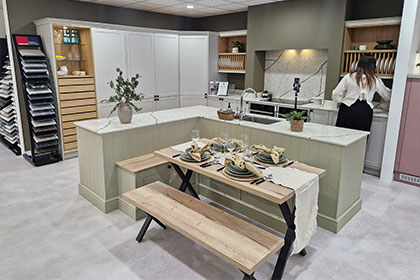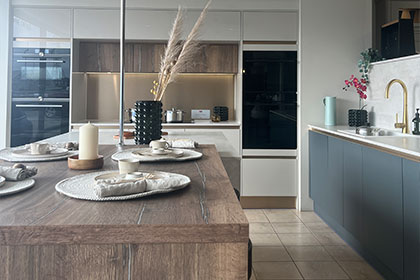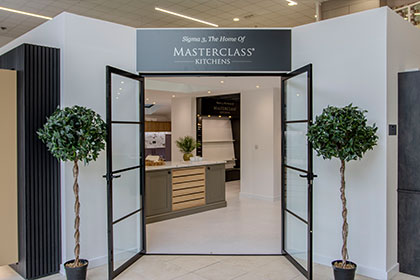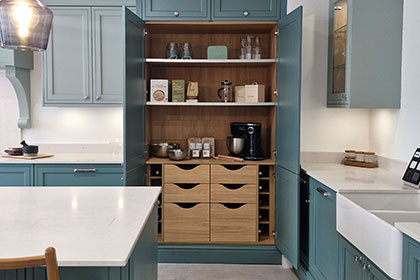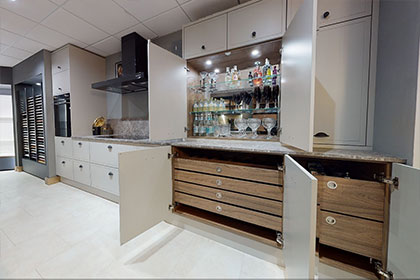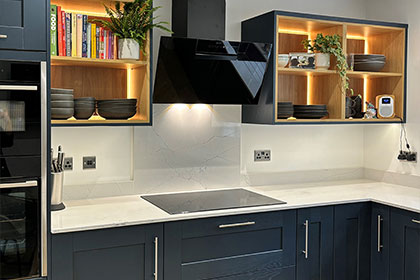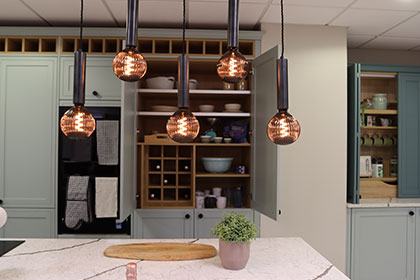Keeping a Hot Pantry Cool and Dry in Summer Months
24 Jul 2023
When most people picture the summer months, they imagine sunrises, alfresco drinks and warm afternoons spent by cooling patio foggers. Keen cooks, though, fret over stifling room temperatures, melted chocolate and cake decorating trials. They know it’s chaos for kitchen pantries in particular.
As summertime heat rises, you can almost feel your sauerkraut bubbling. Aging tins grow auburn liver spots and your farm shop marmalades sit in their gauze like portly men in steam room towels. And you can't look your Maris Pipers in their (numerous) eyes… unless you beat the heat.
Indeed, cooling a hot pantry isn’t easy – you’re fighting thermodynamics – but doing so can sedate the spread of germs and ensure everything’s safe to cook. Sound complex? Don’t fret. Despite the fancy terms, it’s not rocket science. In fact, today’s article breaks down the issue into three easy focus areas.

Temperature
Leading food preservation researchers claim that 10–21°C (50–70°F) are the perfect food storage temperature parameters. Anything beyond the upper limit shortens shelf life. However, a lot of kitchen heat originates from avoidable sources, meaning it’s easy to control.
Thus, if you don’t have a food pantry yet, consider what proactive choices you could make now to minimise future heat problems. Instead of using conducting metal shelves, for instance, get a wooden pantry kitchen cabinet like our Hathaways. The high-quality wood stores less heat and looks beautiful.


Alternatively, you could choose pale pantry door colours to minimises heat retention from sunlight. Could you also install your unit on a north-facing wall to minimise direct sunlight? How about placing your pantry far from heat-producing appliances like ovens? Each step improves efficiency.
Sometimes, you need a lot of open wall space to optimise pantry positions. If you can’t spare it, however, our lavish Lansbury corner kitchen pantries provide a solid alternative. Designed to face out of 90° corners, they provide an accessible option for those who can’t fit a dedicated walk-in pantry.
.jpg)
"Our clients love their Lansburys. As the door sits at a 45° angle, it's easy to reach inside for whatever you need. Plus, the angle adds an air of gentry to a classic kitchen. It’s like having your own little slice of Downton Abbey."
Kitchen Design Consultant at Sigma 3 Kitchens Cardiff West
LOOKING FOR MORE INSPIRATION?
View Free Brochures & Access Exclusive Offers
Sign up to our newsletter for useful advice straight to your inbox.

Air Circulation
A simple two-pronged approach regarding ventilation and airflow can easily reduce the impact of heat on any kitchen storage cabinet. Say you want a butler’s pantry. Simply choosing one that has well-spaced pantry shelving, rather than tight ones, will more adequately ventilate your produce.
.jpg)
.jpg)
This simple act, which stops pockets of humidity from accumulating in nooks, is simple to execute. You could, for example:
- Choose a pantry with a door that’s solid but allows airflow
- Use open shelving instead of air-blocking cabinets
- Space your pantry shelves and leave gaps between foods
- Rotate the ingredients you store, using the oldest first
These precautions alone should be enough to keep your food fresh. However, if you actively circulate air with an AC unit on top, you’ll keep your kitchen pantry cupboards extra fresh and cool.
.png)
"All our pantry options have well-spaced shelves as standard and use insulating board to help regulate internal temperatures. That said, an AC unit can help it maintain fresh ingredients if you keep a lot of perishable goods with a short shelf-life."
Kitchen Design Consultant at Sigma 3 Kitchens Esher
Humidity
Heat isn’t the only cause of microbe growth. Other factors include food acidity, time, oxygen exposure and humidity. What’s more, different foods thrive under different humidity levels. For instance:
- Fresh fruit and vegetables like 90-95%
- Cheese needs 75-95%
- Dry foods must remain under 50%
Unfortunately, as most fridges waver around 30% humidity, you can’t even regulate by storing at-risk foods in the fridge when temperatures rise. What you can do is install a hygrometer to track your pantry’s humidity levels and opt for a pantry with pull-out shelves. The latter enables you to create a series of microclimates in your pantry, all of which have different humidity levels.
Then, on shelves where moisture levels rise too high, you can add silica gel packets to dry the air. If a shelf gets too dry, meanwhile, you can move at-risk items to pull-out drawers that stop their moisture evaporating into the open kitchen.
.jpg)
At Sigma 3, we’ve pre-optimised our Lansbury and Hathaway pantry designs with flexibility in mind. The Lansbury, our corner kitchen pantry unit, for example, contains deep enough shelves to contain pantry boxes, and the Hathaway comes with a range of drawers, shelves and pigeonholes.
.png)
"Aside from the odd ready meal, food rarely comes in stackable boxes. Thus, it makes sense to have a storage option that caters for a range of packaging shapes. Our pantries provide that sort of versatility."
Kitchen Design Consultant at Sigma 3 Kitchens Cardiff East
Let a Kitchen Expert Worry About It
Engineering the ideal pantry conditions isn’t easy. At Sigma 3 Kitchens, however, we are experts in this area. So, if you need help designing and fitting a kitchen with a fully-optimised pantry, select your nearest showroom and book a consultation. Or, if you just want more inspiration, become a Sigma 3 Insider for free. As an Insider, you’ll get interior design tips, lifestyle guides and resources – all free.





